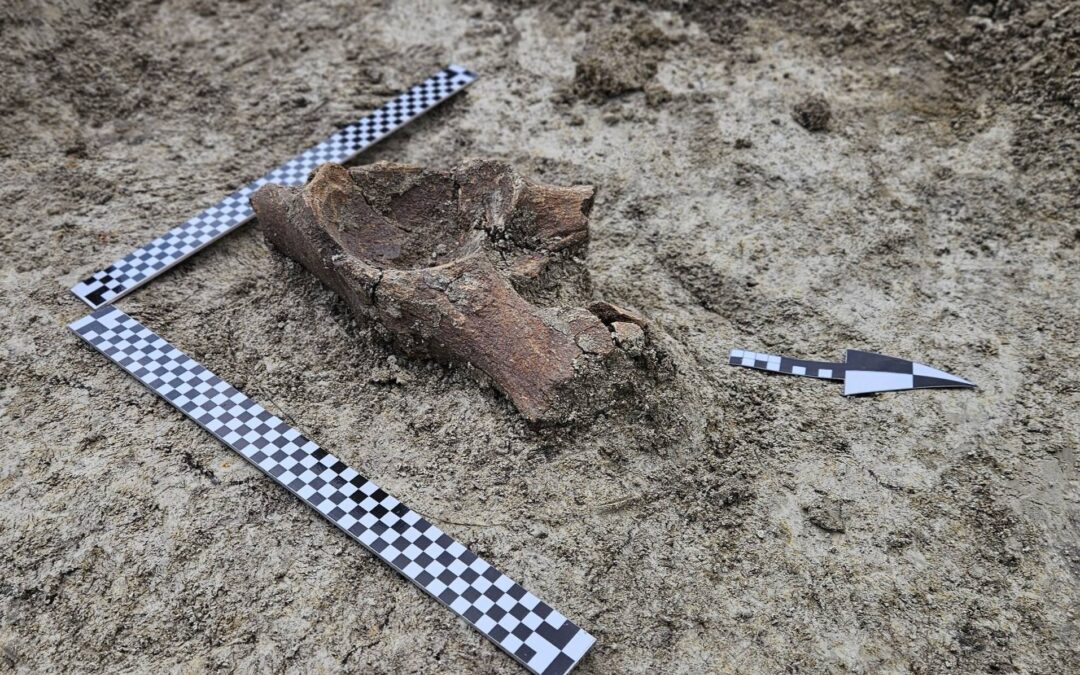Keep our news free from ads and paywalls by making a donation to support our work!

Notes from Poland is run by a small editorial team and is published by an independent, non-profit foundation that is funded through donations from our readers. We cannot do what we do without your support.
A mammoth tusk and a pelvis fragment that belonged to either a mammoth or a forest elephant have been discovered during archaeological works in southeastern Poland.
The remains date back to the Pleistocene, an epoch that lasted from around 2.6 million to 11,700 years ago and which is commonly known as the Ice Age.
Archaeologists found the remains in a village called Łabunie during excavations related to the construction of the S17 expressway near the city of Zamość in the Lubelskie province, broadcaster TVN24 reports.
Initially, the news was kept secret for a week in order to not attract unwanted visitors to the site. The remains were subsequently transferred to Maria Curie-Skłodowska University (UMCS) for further research.
Speaking with TVN24, Rafał Niedźwiadek from the Institute of Archaeology at UMCS highlighted the rarity of the find. He explained that “no human-made artefacts from this period have been found at the site so far” and added that further work is necessary to find the remains of “the people who hunted the mammoth”.
The Pleistocene was an epoch that lasted between around 2.6 million and 11,700 years ago and is commonly referred to as the Ice Age due to the enormous continental glaciers that covered, among other places, the northern and central parts of Europe, including Poland.
Mammoths inhabited northern Europe, Asia and the Americas until the end of the Pleistocene. They were hunted by humans, who used their tusks, among other things, to build shelters, writes TVN24.
To date, archaeologists have surveyed an area of around 240 acres (97 hectares) in Łabunie, where they have discovered the remains of a medieval settlement, tentatively dated to the early and late Middle Ages.
They have documented and examined around 650 immovable archaeological objects, including the remains of residential buildings, several hundred fragments of ceramic vessels, pieces of animal bone, a few flint tools, a bone spike, an awl and a stone quern.
The S17 expressway will connect Zamość with the village of Hrebenne on the Polish-Ukrainian border. Poland’s General Directorate for National Roads and Motorways (GDDKiA) has planned 17 archaeological sites with a total area of about 25 hectares on three sections of the anticipated S17 route, spanning a total of 50 kilometres.
Last year, mammoth, bear and cave lion bones, as well as other artefacts, were discovered during archaeological works in the Paradise Cave (Jaskinia Raj) in southern Poland
200 large and well-preserved bear, cave lion and mammoth bones have been discovered during archaeological works in one of the most famous caves in Poland, called Paradise Cave.
The works there are being conducted for the first time since the 1960shttps://t.co/ZvjFeIv7ek
— Notes from Poland 🇵🇱 (@notesfrompoland) February 14, 2024

Notes from Poland is run by a small editorial team and published by an independent, non-profit foundation that is funded through donations from our readers. We cannot do what we do without your support.
Main image credit: Generalna Dyrekcja Dróg Krajowych i Autostrad

Agata Pyka is an Assistant Editor at Notes from Poland. She specialises in Central and Eastern European affairs, cybersecurity, and investigative reporting. She holds a master’s degree in political communication from the University of Amsterdam, and her work has appeared in Euractiv, the Balkan Investigative Reporting Network (BIRN), and The European Correspondent, among others.



















